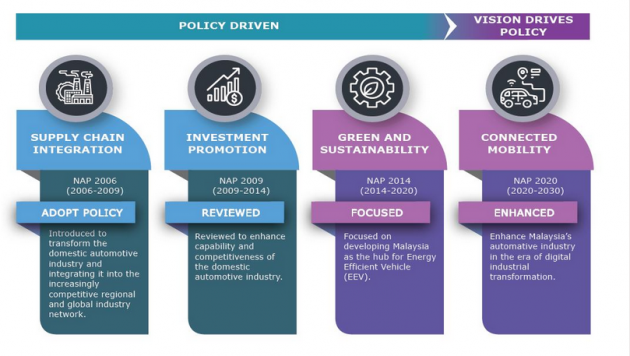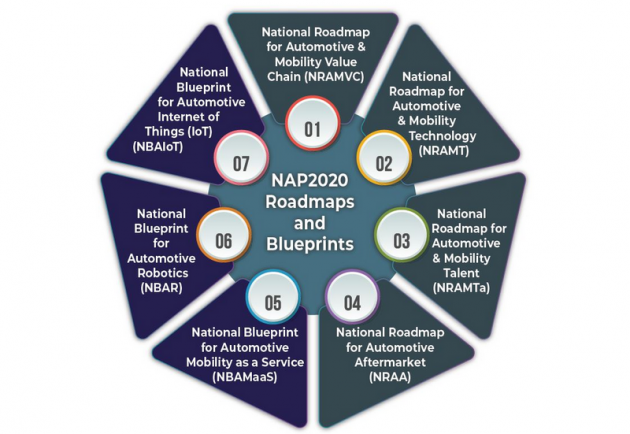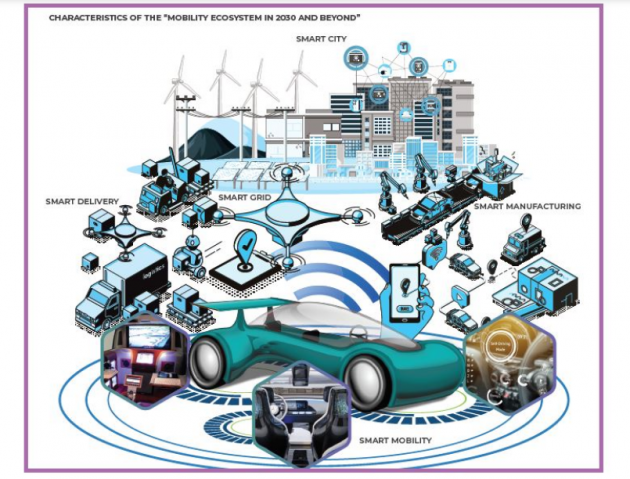The National Automotive Policy 2020 (NAP 2020) has been officially launched. The policy, unveiled earlier today by prime minister Tun Dr Mahathir Mohamad, aims to develop the country towards becoming a regional leader in automotive manufacturing, engineering and technology, and is very much an enhancement of NAP 2014, expanding on the outlines seen previously.
Also present at the launch, which took place at the ministry of international trade and industry’s (MITI) office in Kuala Lumpur, were several cabinet ministers, including international trade and industry minister Datuk Darell Leiking.
The updated policy projects to implement growth on a number of fronts between 2020 and 2030, including the research of new technologies and the creation of business and job opportunities as well as the development of new manufacturing processes and value chains within the local automotive and overall mobility sector. Support for national car projects and the growth of exports, investments and local production volume will also be pursued.
On top of stimulating the development of vehicles, components and new systems, Leiking said that NAP 2020 would have a holistic approach. “It will cover the comprehensive development of industry capacities, including the supply chain, human capital, indigenous technology, infrastructure, standards/regulations and other elements,” he said in his speech.
“Rest assured that while the focus of the policy is on new technology, the government is aware of the immediate and current needs of the industry, and will endure that none is left behind,” he added.
In a nutshell, NAP 2020 consists of three directional thrusts and three strategies as well as seven roadmaps/blueprints to be implemented to the year 2030.
The directions include a focus on Next Generation Vehicles (NxGVs), Mobility as a Service (MaaS) and Industry 4.0, and the plan will incorporate the development of Automated, Autonomous, Connected Vehicles (AACV), light weight material technology as well as hybrid, electric and fuel cell vehicles.
Elsewhere, the customised incentives mechanism is set to continued, and will be based on cost benefit analysis of specific business proposals by investors. These customised incentives will be more comprehensive, and will encompass a broader scope to involve not just EEVs but NxGVs, critical components as well as testing centres.
Another direction that will be pursued is market expansion, in which measures will be introduced to increase export development not only for vehicles and components, but also for the aftermarket and services sector. This will look to significantly expand from that achieved in NAP 2014, which saw exports of parts and components grow from RM4.7 billion in 2014 to RM12.1 billion in 2018.
Strategy-wise, emphasis will be placed on enhancing the competitiveness of the domestic value chain by pursuing high-quality technology products that will meet future standards of vehicle manufacturers and consumer needs. Secondly, local talent will be further developed, in tandem with current and future demands for new directions in automotive and mobility technology.
The third strategy will involve safety, environment and consumerism matters. More environmentally friendly elements of technologies are set to be adopted to address the issue of emissions, while the emphasis on safety of vehicles will grow. Additionally, new elements to protect consumer rights related to spare parts and services, such as maintenance and recall processes, will be incorporated.
Seven new roadmaps and blueprints were also revealed at the launch. These are supplementary to the main policy, and will serve as guidelines for future expansion in each category.
The seven roadmaps are:
1. National Roadmap for Automotive & Mobility Value Chain (NRAMVC)
2. National Roadmap for Automotive & Mobility Technology (NRAMT)
3. National Roadmap for Automotive & Mobility Talent (NRAMTa)
4. National Roadmap for Automotive Aftermarket (NRAA)
5. National Blueprint for Automotive Mobility as a Service (NBAMaaS)
6. National Blueprint for Automotive Robotics (NBAR)
7. National Blueprint for Automotive Internet of Things (NBAIoT)
According to MITI, these roadmaps and blueprints will be continuously reviewed and updated to remain abreast of disruptive global trends, technologies and demands.
“I’d like you to take this policy with a long term perspective. While we address the current issues within our industry today, the NAP 2020 is truly about the long term, bigger picture that guides our thinking, capabilities and spirit towards driving the industrialisation of this country,” Leiking said.
Besides aligning to current technological advancements, NAP 2020 will also set out to improve policy measures and implementation. The ministry added that the launch of the NAP 2020 will be followed through with numerous outreach campaigns, information repositories, conferences and stakeholder engagements.
Tags: NAP 2020
Related Cars for Sale on
Source: Read Full Article















